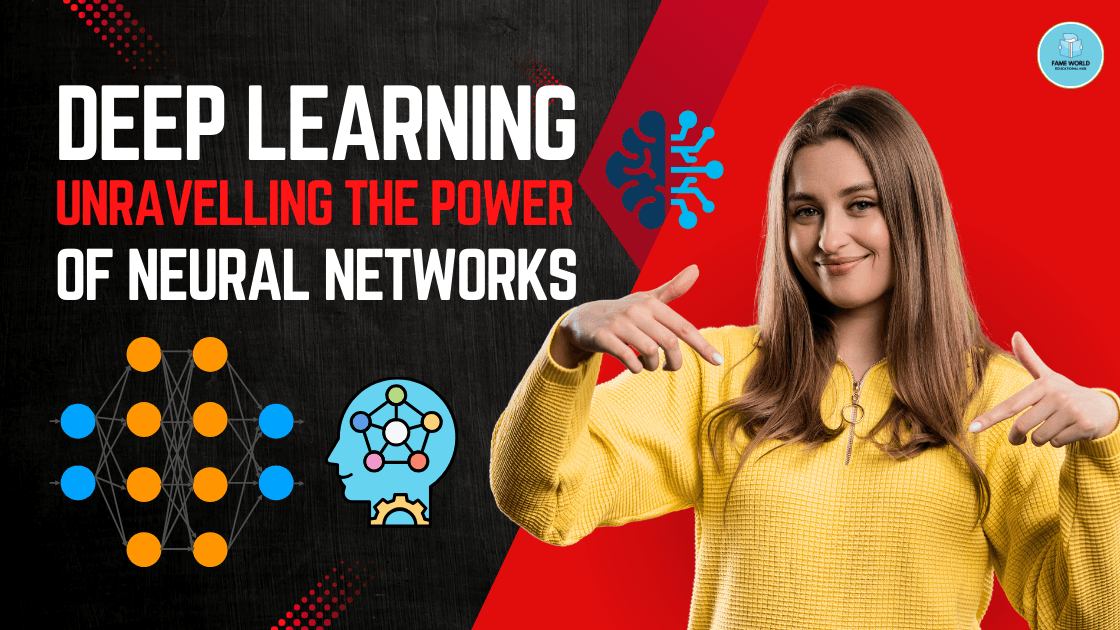Introduction
Deep learning is a subset of machine learning that uses artificial neural networks to process and learn from large amounts of data. It has revolutionized various fields, including computer vision, natural language processing, and autonomous systems. This interactive guide will walk you through the fundamentals, real-world applications, and key questions to explore in your deep learning journey.
What is Deep Learning?
Deep learning models mimic the human brain’s ability to recognize patterns and make decisions. These models consist of multiple layers of artificial neurons, enabling them to learn complex representations of data.
Key Components of Deep Learning:
- Neural Networks: A collection of nodes (neurons) arranged in layers.
- Activation Functions: Functions like ReLU and Sigmoid that determine neuron outputs.
- Backpropagation: The method used to adjust weights based on error feedback.
- Optimization Algorithms: Such as Stochastic Gradient Descent (SGD) and Adam optimizer.
- Loss Functions: Metrics like Mean Squared Error (MSE) or Cross-Entropy to evaluate performance.
Interactive Exercise: Build Your Own Neural Network
Try this simple challenge:
- Research and install TensorFlow or PyTorch.
- Load the MNIST dataset (a collection of handwritten digits).
- Build a simple feedforward neural network to classify digits.
- Train your model and observe the accuracy changes.
- Experiment by tweaking learning rates and hidden layers.
Real-World Applications of Deep Learning
Deep learning is powering innovations across industries:
- Healthcare: Disease detection, medical imaging analysis.
- Finance: Fraud detection, algorithmic trading.
- Autonomous Vehicles: Self-driving car navigation.
- Entertainment: AI-generated art, music recommendation systems.
- Security: Facial recognition, anomaly detection.
Challenges and Limitations
Despite its potential, deep learning faces challenges:
- High computational cost: Requires powerful GPUs and TPUs.
- Data dependency: Performance improves with massive datasets.
- Interpretability: Hard to understand why models make certain decisions.
Must-Know Questions for Deep Learning Enthusiasts
- What is the difference between deep learning and traditional machine learning?
- How do convolutional neural networks (CNNs) work in image processing?
- What are the advantages of recurrent neural networks (RNNs) in sequential data analysis?
- How does overfitting occur, and how can it be prevented?
- What are transformers, and how are they used in natural language processing (NLP)?
Watch the Video Below for More Insights!
Deep learning is an exciting and rapidly evolving field. Keep experimenting, learning, and stay curious!
What deep learning topic interests you the most? Drop a comment below!
Additional learning resources:
PYTHON Q&A SERIES – Link
IOT TUTORIAL SERIES – Link
PYTHON PROGRAMMING TUTORIAL SERIES – Link
CAREER TIPS – Link
CLOUD COMPUTING – Link
MERN FULL STACK WEB DEVELOPMENT – Link
DJANGO SERIES – Link
DIGITAL MARKETING – Link
C LANGUAGE – Link
CODING INTERVIEW PREPARATION – Link
NEW AI TOOLS – Link
PYTHONISTA FOR PYTHON LOVERS – Link
ARTIFICIAL INTELLIGENCE – Link
MACHINE LEARNING USING PYTHON – Link
DBMS – Link
PYTHON PROGRAMMING QUIZ SERIES – Link
BLOCKCHAIN TECHNOLOGY TUTORIAL SERIES – Link
NETWORKING QUIZ SERIES – Link
CYBER SECURITY Q&A SERIES – Link
PROGRAMMING RELATED STUFF – Link
Interview Preparation Series –
DATA ANALYTICS – link
JAVA PROGRAMMING – link
PYTHON PROGRAMMING (BYTE SIZED) – link
PYTHON PROGRAMMING – link
CODING INTERVIEW – link
JAVASCRIPT – link
NETWORKING QUIZ – link
SOFTWARE DEVELOPMENT – link




Aigo-tools
March 9, 2025The approach to data processing is both innovative and practical. This AI Tools Directory helps identify solutions that scale effectively.